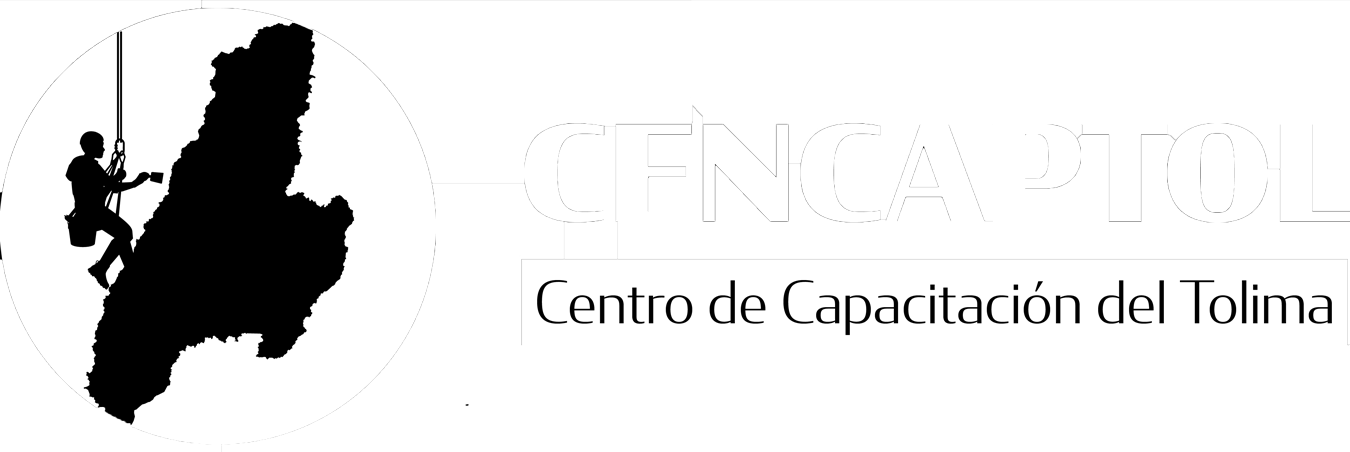Content
- Can banks grab the buy now, pay later opportunity?
- What’s the Difference: Open Banking, Open Finance & Embedded Finance
- Trends to watch out for
- How embedded finance delivers a frictionless B2B payment experience
- Embedded Banking Market
- Card transactions
- Challenges CFOs in the Financial Industry Are Set to Face
With the rise in digitization comes increased security concerns from individuals and businesses alike. In a 2022 HelpSystems Report, 35% of survey respondents stated data security has significantly increased as a priority. One bookkeeper even shared that their monthly reconciliation process could take up to 4 hours, and would manually import each transaction and its relevant file.
- When I was shopping online recently, a new option appeared on the checkout screen that presented me the opportunity to …
- The COVID-19 pandemic has significantly accelerated the volume and value of digital payments, in 2022 we will see the next phase of digital payments as alternative payment methods become the norm.
- Traditional lenders finance the vast majority, leaving around 10% of PoS transactions made via embedded finance, resulting in a loan value of around $43 billion.
- Many companies have waited until their main business activity has developed before being able to monetize payments.
- The nonbank controls the customer experience, but the banking provider controls what that service will be and how flexible it will be.
- Within embedded PoS lending, enablers and platforms should be able to increase their profits, despite shrinking margins.
Card transactions accounted for $0.7 billion of revenue, split evenly between platforms and enablers, while ACH accounted for $1.2 billion of total revenue. Digitally stored value and loyalty offerings, such as those provided through the Starbucks app, are an edge case; views may differ on whether this meets our definition or not. We have omitted the offering because it is a digitally native, closed-loop prepayment rather than a contextually embedded service with shared economics. “More and more vertical Software-as-a-Service platforms are coming to the realization that embedded financial services, and particularly embedded marketplaces, can generate far more value over time than a SaaS business alone,” Hummer added.
Can banks grab the buy now, pay later opportunity?
If you haven’t yet heard of or implemented embedded banking into your treasury management tools, you’ll likely want to after reading this article. As a burgeoning trend in the financial services industry, embedded finance will reach a global value Best Upcoming Embedded Payment Trends of $7 trillion in the next 10 years, signalling that the best time to invest in embedded banking is now. B2B marketplaces are essentially self-service platforms that make it easy for businesses to buy and sell their goods and services online.

Because the hotel is paid by the supplier rather than its clients, once the line of credit is in place, gone is the need for resources to chase unpaid invoices. The appeal of Buy Now Pay Later propositions have grown quickly across Europe. In Germany, BNPL was around 10 times higher than the penetration rate achieved in the United States. By 2026, platform revenue will more than double to $14 billion, with take rates remaining largely flat.
What’s the Difference: Open Banking, Open Finance & Embedded Finance
The world may be digitising, but physical commerce still counts for a lot. It’s important therefore, that you’re able to cater to your users’ point of sale requirements as well. In doing so, you’ll not only make life much easier for them, you’ll increase your customer loyalty in the long-run. To achieve this, you’ll need a payments functionality that supports online and in-person payments in one system. If your backend systems are connected, it’s easy for your users to support seamless cross-channel journeys, reconcile cross-channel payments, and enjoy valuable cross-channel insights.
Within embedded PoS lending, enablers and platforms should be able to increase their profits, despite shrinking margins. Incumbent financial institutions face the threats of shifting economics and adverse selection with this new value chain, but they can also realize tremendous growth if they identify where to play across specific vertical segments. In November 2020, Brazil-based fintech company EBANX and ride-hailing app Uber announced a partnership on PIX (a payment system launched by the Brazilian government. However, the customers in Singapore still prefer making payments through cash.
EPAM Continuum Releases Third Annual Consumer Banking Report – Revealing Shifting Trends Facing the Banking Industry – PR Newswire
EPAM Continuum Releases Third Annual Consumer Banking Report – Revealing Shifting Trends Facing the Banking Industry.
Posted: Wed, 02 Nov 2022 14:02:00 GMT [source]
In addition to this, several companies are focusing on acquisitions and partnerships with other companies to offer advanced embedded banking solutions and services to serve the prospective customers. In terms of end users, sales in the FinTech corporations segment are estimated to grow at a CAGR of 24.3% during the forecast period. Growth in the segment can be attributed to increasing number of financial institutions collaborating with the FinTech corporation to facilitate seamless integration. Embedded banking is the seamless integration of financial services into a traditionally non-financial platform.
Trends to watch out for
The process is facilitated through application program interfaces , software tools that enable apps to safely and securely communicate with each other to streamline access to financial data. UK and EU legislation mandate that, once consent is granted, banks and financial institutions must share customer data with other financial bodies, affording smaller firms means to provide near-instant lending. Building a successful embedded finance proposition will require a fundamental rethinking of the capabilities needed, especially in terms of risk. Having a certain share of nonbanked customers unconditionally processed through a real-time credit decisioning engine will challenge most banks’ tolerance for risk. Banks and regulators will have to get comfortable with platforms and enablers making credit decisions that may affect traditional balance sheets, based on real-time and contextual data held outside of the bank. We estimate the 2021 US market for platforms and enablers at $22 billion in total revenue across payments, lending, banking, and cards.
With new competitors seizing the market every day, if you’re looking to master digital disruption, you need to be agile enough to speed up your time-to-market. While digitization has been around long before the pandemic took the world by surprise – banks have further accelerated their digitization efforts with global lockdowns in play. We do not include interest-bearing financing options that are not provided at the point of sale, or that are provided by the retailer directly in partnership with a bank or lender. To succeed, they’ll need to choose partners carefully—institutions that truly meet their needs and enablers with a razor-sharp focus on fulfilling their requirements. Goldman Sachs has taken strategic bets across the value chain, including cementing itself as the banking partner for Apple Card and a partner for Stripe Treasury, while also fielding its own distribution through Marcus and MarcusPay.
How embedded finance delivers a frictionless B2B payment experience
As a result, BlueSnap has seen an increasing number of companies, particularly those based in the United States, coming to them for advice on which payment methods to integrate when expanding in the region. Raised $187m in June to expand its offering, helping established banks build next-generation services and tools to help legacy systems work more efficiently. Its founder Antony Jenkins is the ex-chief executive of Barclays, and 10x is reportedly building services for Westpac and Nationwide. Embedded finance is the process of financing a product or service as part of the overall product or service.
Nevertheless, when it comes to embedded finance and the speed of digitalization, there is much space to act, as giving the customers an excellent chance to enjoy new and beneficial products and services is a good incentive. Owing to this, solution vendors operating in the embedded banking market are also uncertain about making investments due to the lower number of digital transactions. Hence, low digital literacy across developing countries is expected to hinder the growth in the embedded banking market. Embedded finance can consist of embedded payments, embedded lending, embedded insurance, and embedded banking, which we’ll be discussing more throughout this article. Ng points out that embedded banking efforts rely on a balancing act between the seller and the financial institution. The nonbank controls the customer experience, but the banking provider controls what that service will be and how flexible it will be.
According to an ongoing tendency, customer digital-only behavior has provoked intense competition in the market and made various vendors seek help from financial providers to meet the growing appetites of sophisticated consumers. The embedded banking market was valued at ~US$ 12.1 Bn in 2021, and is estimated to grow at an exceptional pace with a CAGR of 22.1% to reach ~US$ 106.8 Bn in 2032. While embedded payments require a significant amount of behind-the-scenes orchestration, the speed and ease in which transactions take place can be transformational. Also, the ability to get paid instantly enables businesses to pre-order goods, or even jump the queue for suppliers sending orders based on which customers pay first. If banks are looking to battle out the revenue recession and hop on board the innovations train, embedding popular FinTech products into their suite of digital banking solutions, is the way forward.
Embedded Banking Market
Boxed in by existing hard-wired software, financial institutions face a growing agility gap. Learn how to shift to a new model that can drive your competitive advantage. By eliminating mundane day-to-day tasks, A/R can move into a more strategic role.
This gamified tracking and rewards experience highlights the increased personalisation available through embedded finance tools. Embedded finance on digital platforms integrates banking services into SMEs’ workflow. Skaleet works with vertical SaaS companies to support their plans to facilitate payments (“PayFac”) to process their payments and create personalized flows. Increased data visibility, reduced manual error, and improved automated processes are amongst some of the many benefits embedded banking can bring to your business.

The winners will likely provide a full suite of services, including some regulatory oversight, compliance, origination, and fulfillment. Enablers that take the hassle out of embedded finance for platforms through easy integrations and great servicing should hold the upper hand. They can choose a high-volume, self-service model, or a higher-touch operation across fewer, bigger platforms. And they may concentrate on specific sectors with large or growing addressable markets, https://globalcloudteam.com/ where they can scale up and steadily improve the user experience. Starting as a way for fintechs and neobanks to borrow the banking license of an established bank, embedded banking has historically been limited to prepaid or debit cards. New use cases then emerged, among gig workers and sole proprietors, and our research indicates that the market growth will continue alongside the rise of a broad set of enablers, including Galileo, Treasury Prime, Stripe, and Marqeta.
Card transactions
Dropping such barriers to entry has led to a boom in companies using embedded finance to meet customer needs. Our research points to three sectors that have seen the majority of this uptake, and they’re not surprising — retail and e-commerce, entertainment and transport and logistics. For instance, In December 2019, JCB, a Japanese business to business payments firm, in partnership with Keychain a Singapore based blockchain technology provider, announced the collaboration for utilizing blockchain in payment processes. Through the partnership, the companies will offer offline functionality to embedded payments.
Customers are no longer satisfied with outdated and manual modes of payment and reconciliation and are instead continuously pushing for new ways to improve their accounting and treasury management activities. Because of the acceleration of digitization and innovation, businesses are looking to their banks for digital solutions that can help them eliminate paper-based processes. This rising demand for a simple and holistic experience has helped pave the way for embedded finance.
The first part of the research delved into how deeply committed consumers are with their top brands. Moving into embedded credit is one of the ways revenue can be increased. Learn how consumer insights and intent signals can transform your marketing campaigns.
There are now 30+ fintech unicorns in Europe. Who are they?
Our recent Embedded Finance Report found that 35% of our SMB survey respondents are using an embedded payments service provided by their platform (up from 30% in 2021). On top of that, 69% of these users would move to a platform that offered a more integrated payments experience. Equally compelling is the fact that front-running platform businesses are already seeing up to 80% of their revenue coming from embedded payments. FinTech Magazine is the Digital Community for the Financial Technology industry. FinTech Magazine covers banks, challenger banks, payment solutions, technology platforms, digital currencies and financial services – connecting the world’s largest community of banking and fintech executives. FinTech Magazine focuses on fintech news, key fintech interviews, fintech videos, along with an ever-expanding range of focused fintech white papers and webinars.
Challenges CFOs in the Financial Industry Are Set to Face
Evolution and opportunity in the embedded finance ecosystem – exploring the embedded finance environment today, how and why we’ve got to where we are, and what embedded finance means for consumers, merchants, and other key players. The consumer take on embedded payments, revealing new research findings from a recent international survey of 11,000 consumers, commissioned by Paysafe, to understand their take on embedded payments. Extend, the digital payment infrastructure for financial institutions to enable modern card experiences.Read Andrew Jamison’s full executive profile here. While it’s one thing to test the waters with different strategies, it’s equally important to assess the partnership at stake. Choosing solutions based on the feature set today doesn’t always guarantee long-term success. However, finding a partner that offers flexibility within their offerings and can help you adjust to changing demand could pay off.

